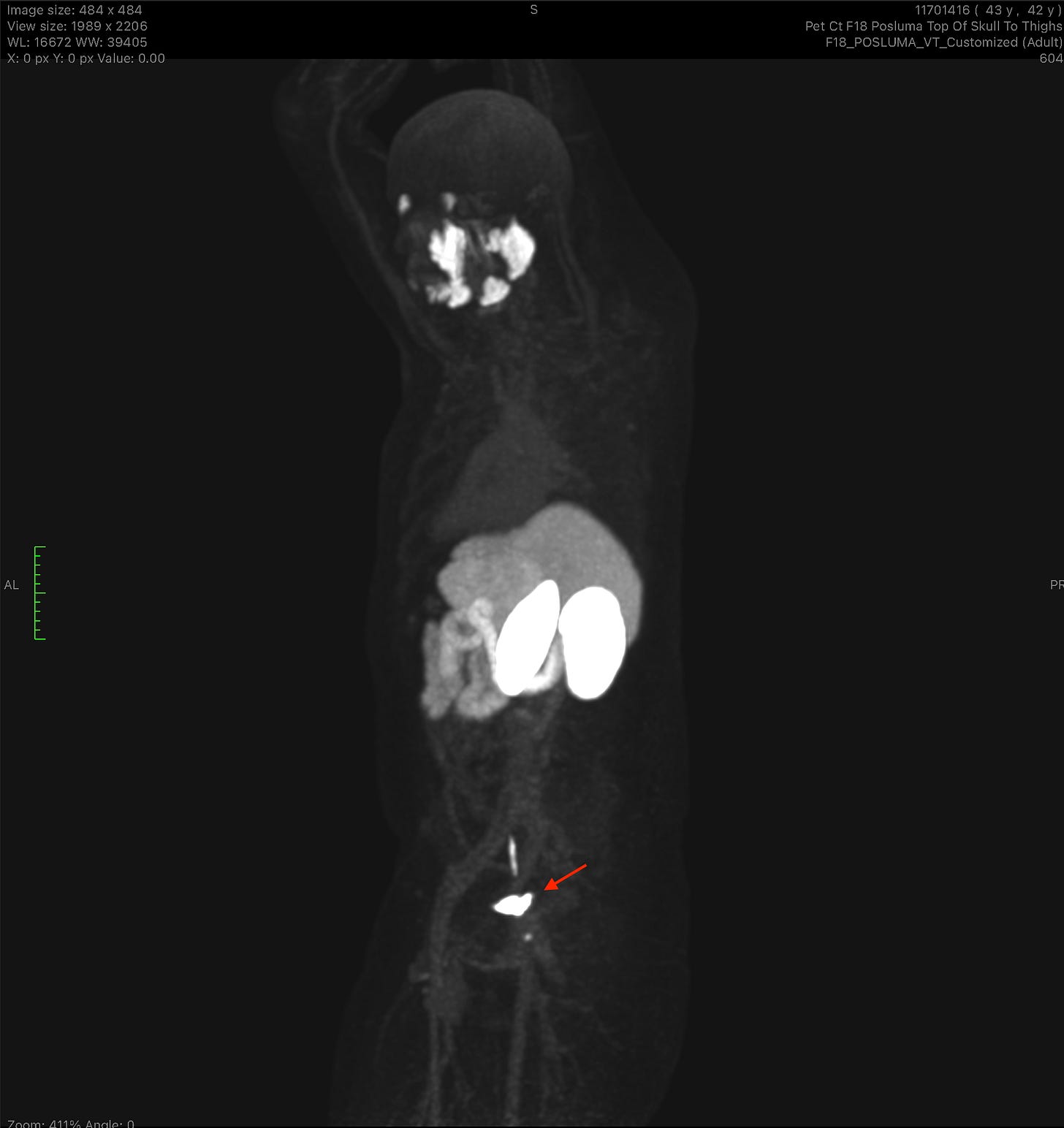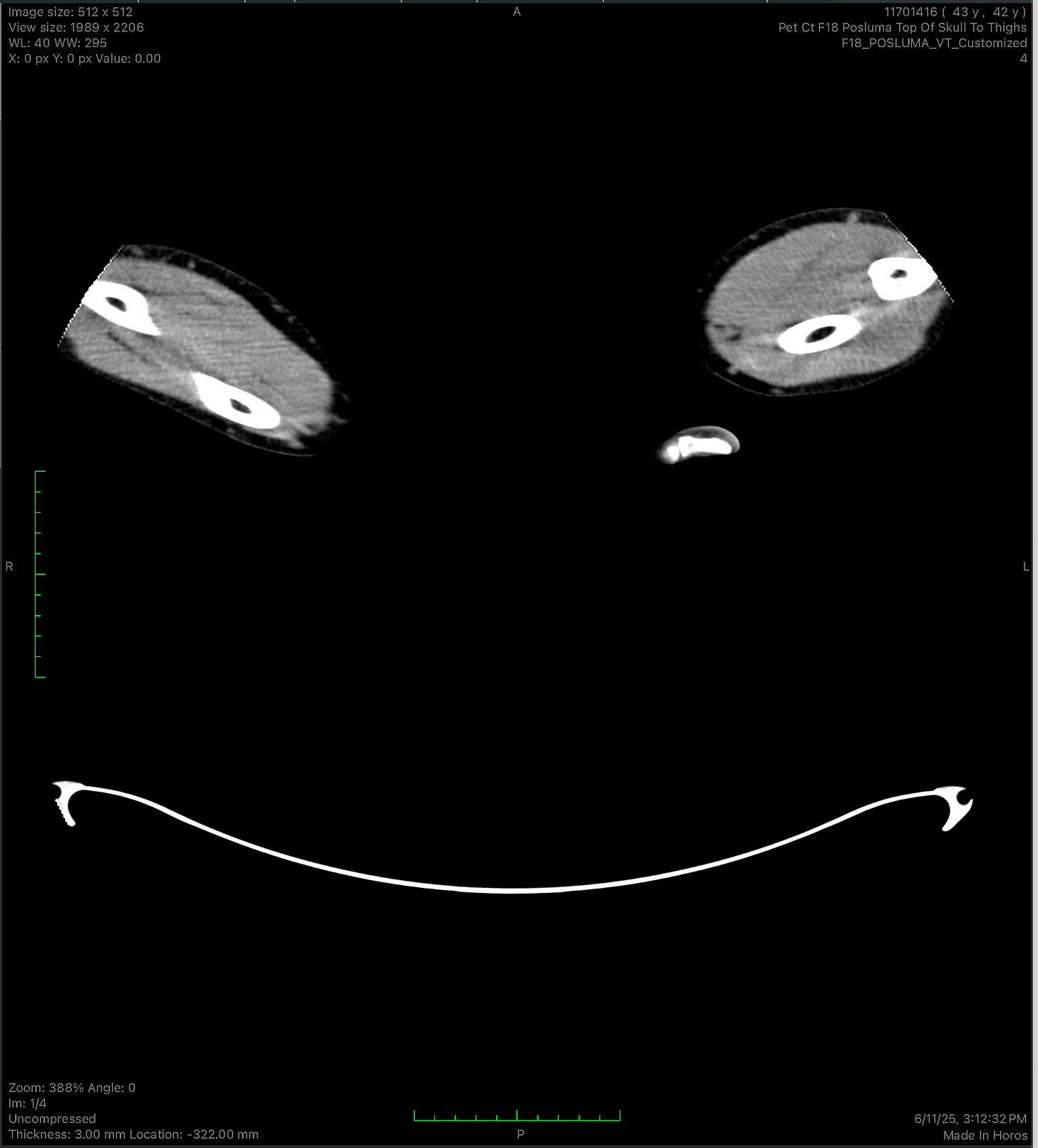Pernicious Gets Her Eviction Notice
Sucky Options Only
If you’re new here: I’ve been documenting my (very unexpected) prostate cancer journey since my diagnosis earlier this year. I’m young for this disease, symptom-free when it was found, and blessed/cursed with way too many treatment options. After months of scans, consults, and enough parking fees to finance a small condo, I’ve finally made my decision.
It’s been a little while since my last update — hope you’ve all been well. Justin and I took a much-needed trip to Provincetown, MA, for a full-on “Gay Ole’ Time.” It was the perfect break from the madness of 2025 — both the global chaos and the personal variety.
Since getting back, it’s been right back into the cycle: more visits, more tests, more people, more opinions. But enough is enough — time to make decisions. Here’s what I was looking at:
Surgery — Open or Laparoscopic (robot-assisted preferred)
Radiation — CyberKnife, SBRT, IMRT, or Proton Therapy
Hormone Therapy — Typically for later-stage cases (ADT info)
Focal Therapy — HIFU, Tulsa, Cryoablation, or NanoKnife
Aqua Ablation — Trial phase, very limited patient history
Narrowing the List
Some choices were an easy “No.” My first urologist preferred open surgery, which instantly ruled him out. I already knew that if I went the surgery route, I wanted a RALP — Robot-Assisted Laparoscopic Prostatectomy.
Medical oncology (a.k.a. hormone therapy) is usually for much later stages, often as a last resort after surgery and radiation, unless other factors are at play — age, overall health, etc. I knew this, but still met with a medical oncologist. She was polite but clearly bored; there was nothing she could offer me.
That left about half a dozen serious options to research. Which meant: finding resources, booking appointments, meeting doctors in person, Zoom calls, FaceTimes, and paying what felt like $975 just for parking.
And the experiences? Mixed. The first surgeon I saw at City of Hope was aggressive and pushy, pressing me on an urgent timeline no one else had suggested. Not the vibe you want from the person who might be cutting into you.
The Good Kind of Consult
Next stop was a radiation oncologist at City of Hope, paired with a PA who was an absolute star — warm, sharp, and confident. For the first part of our visit, you’d never guess she hadn’t been doing this for 20 years. The oncologist herself was just as impressive, walking me through the radiation options: some take 5 days, others 28, and the longest 44 days.
As an aside — more women in medicine, please. I’ll say it again. On average, they’ve been sharper than many of their male counterparts, and they actually seem to care. They don’t fit the stereotype of the cold, detached doctor.
After that, I had genetic testing (all clear!) and a PET PSMA/CT scan. They injected a small amount of radioactive material, then tracked it through my body. It looks for Prostate-Specific Antigen and lights up wherever it finds some.
And there she was. First time anyone had actually seen the cancer — weirdly enough, it’s invisible on an MRI.
UCLA and Real Talk
Then came UCLA’s Dr. Reiter, who connected us with a research fellow studying prostate cancer in gay men. He gave us a ton of useful information, which led us to meet other patients who had already been through various treatments.
Those conversations started awkward — we’re talking incontinence, sexual side effects, and every “frank 🌭” topic you can imagine — with a full audience of a doctor, scribe, two students, a fellow, and a nurse. But after a while, you get used to the bluntness.
One treatment that we looked into was proton therapy, something Justin had already researched and championed. It uses a pencil-thin beam to hit only the tumor, sparing the surrounding tissue. In theory, that means fewer side effects and lower risks than traditional radiation.
Across all these appointments, a recurring comment stood out: “We don’t usually see men your age — they choose surgery.”
Young for This Game
One thing that’s been clear throughout this process: I’m young for this diagnosis — both to have prostate cancer at all and to have caught it with zero symptoms. It’s a blessing and a curse.
On one hand, finding it early gives me more options. On the other, it probably means it’s more aggressive, and the “wait and see” approach isn’t on the table. At my age — versus the average diagnosis age of 68 — doctors aren’t playing around.
My final consult was last week with a surgeon a friend recommended. The vibe wasn’t great, but he did introduce something I hadn’t heard before: Aqua Ablation. Think of it as pressure-washing the prostate — removing the inside while leaving the shell. The catch? It’s still in FDA trial phase, with only a few dozen patients worldwide.
I’m a risk-taker, but that’s a big one.
Cold Doc, Cute Student
During the appointment, the doctor was openly dismissive of my anxiety, my questions, and my uncertainty — as if this isn’t the biggest decision of my life. Everyone I talk to assures me their method will work, but also plants doubt that I should be choosing something else. Now my anxiety is “too much” and I should just… not worry? Sure.
And all of this while five (very nice, very smart) early-20-somethings stood around as we discussed bladder leakage and other topics best left to the imagination. Shout-out to the one student guy who was clearly practicing his bedside manner and trying to calm me down. I appreciated the effort to make up for the doctor’s coldness, but honestly… it came off as kind of “cute.”
I left with a bad taste in my mouth — but also with curiosity about an option no one else had mentioned. In theory, Aqua Ablation could mean fewer side effects than other treatments. While using it for Prostate Cancer is new, the technology has been around several years… maybe it’s safe? Before I left, the doctor gave me his personal cell and told me to text him my thoughts.
I’d been so overwhelmed in the room that I wanted something in writing. I texted him asking for more trial info. I’d already looked up the study and learned he’s one of the lead contributors. That could be good — he’s an expert — or bad if his incentives don’t align with my best care.
Back to Reiter
After texting about the trial, I also reached out to my UCLA surgeon, Dr. Reiter, for his opinion. From the start, he’s been the warmest and kindest of the bunch. His team — especially his Black, female fellow — treated me and Justin like actual people, not just a case file, and kept the tone and temperature exactly where it needed to be - while wearing a UCLA Pride Lanyard.
A day later, Dr. Reiter replied with clear, science-based reasons not to join the trial. He wasn’t pushy. He knows I have anxiety and frames things in a way that manages it instead of mocking it.
Meanwhile, the trial doctor? Still hasn’t replied to my text from over a week ago.
That pretty much sealed the deal.
Look, I’ve spent maybe 30 minutes total with Dr. Reiter over two visits, but I’m excellent at reading people. Justin says I can spot devils long before everyone else. (Shout-out to me clocking in 2014 what the rest of the world didn’t figure out for six years — and also shout out to me that one from 2018 that only came out three months ago. Called both. I’ll stop now, but know there’s a list and I’m ready to tell someone I told you so the moment you slip.)
So, I choo-choo-choose him. Dr. Reiter is my guy. It’s terrifying, but I’ve found my surgeon.
The Decision and the Risks
Sometime between early November and just after New Year’s, I’ll be scheduling Pernicious’ eviction. You don’t have to go home, but you can’t stay here.
None of these choices are great:
Active surveillance → More MRIs, more biopsies, constant watch.
Surgery → Possible lifelong side effects.
Radiation → Also possible lifelong side effects, risk of secondary cancers decades later, plus surgery becomes nearly impossible if it returns.
Focal therapies → Not right for my tumor’s location.
Hormones → Not needed now.
But these are my options — I have to choose.
With Generalized Anxiety Disorder, I can stress about things most people wouldn’t even think of. Strangely, this whole process has been… calming. It’s forced me to accept that I don’t control the future — I just have to ride the ride.
So I’ve chosen my sucky option: surgery. Between now and then, I’m getting as fit and healthy as possible, doing my kegels (yes, men do them too), and prepping for the day.
No more consults. No more “maybes.” Just a goal, a direction, and the plan to get there.
I’ll keep the updates coming.
The Journey Continues,
-rp





So glad you've made a decision!! Cheering you on from the other side of the country! <3